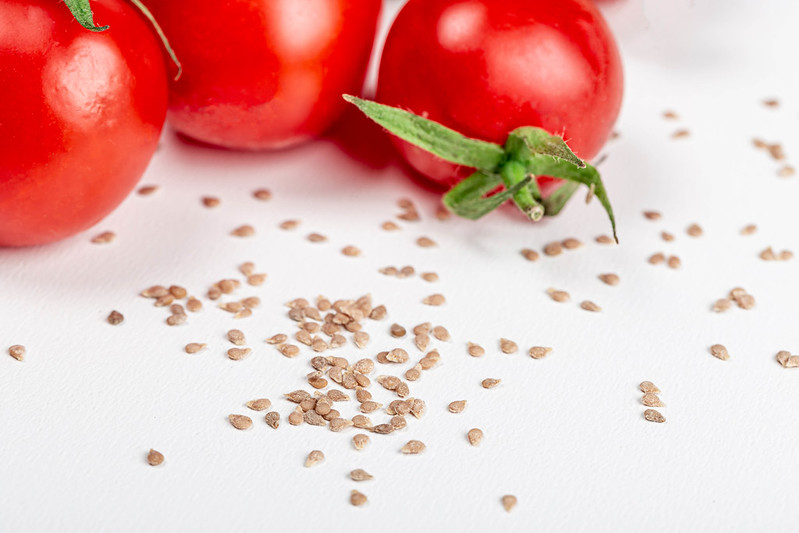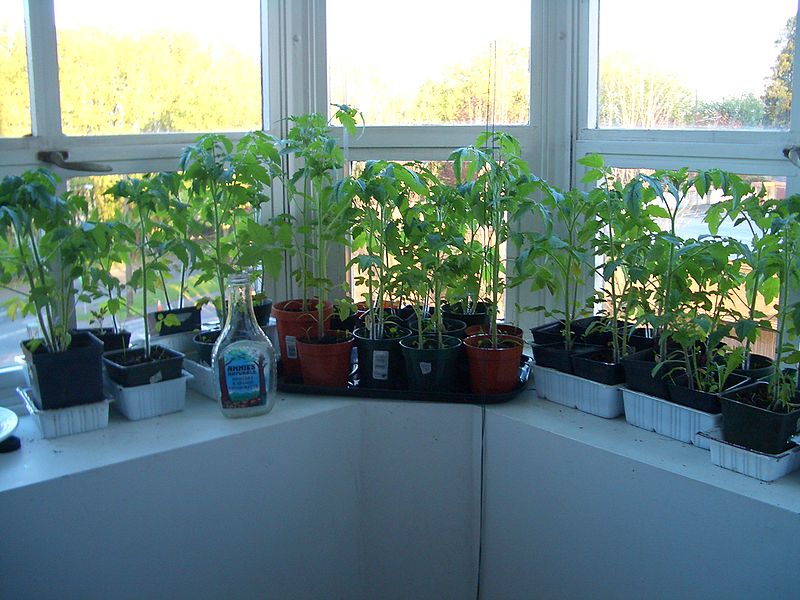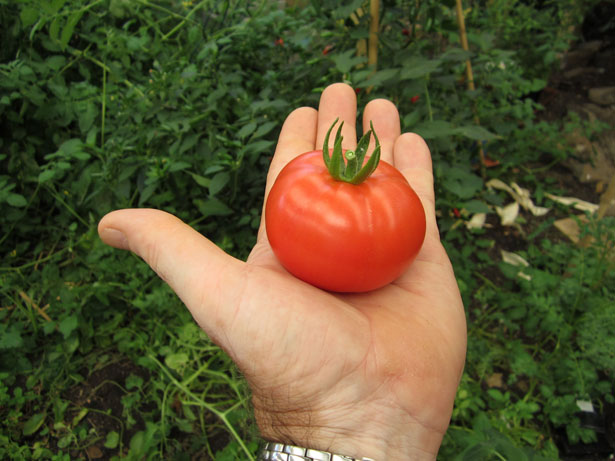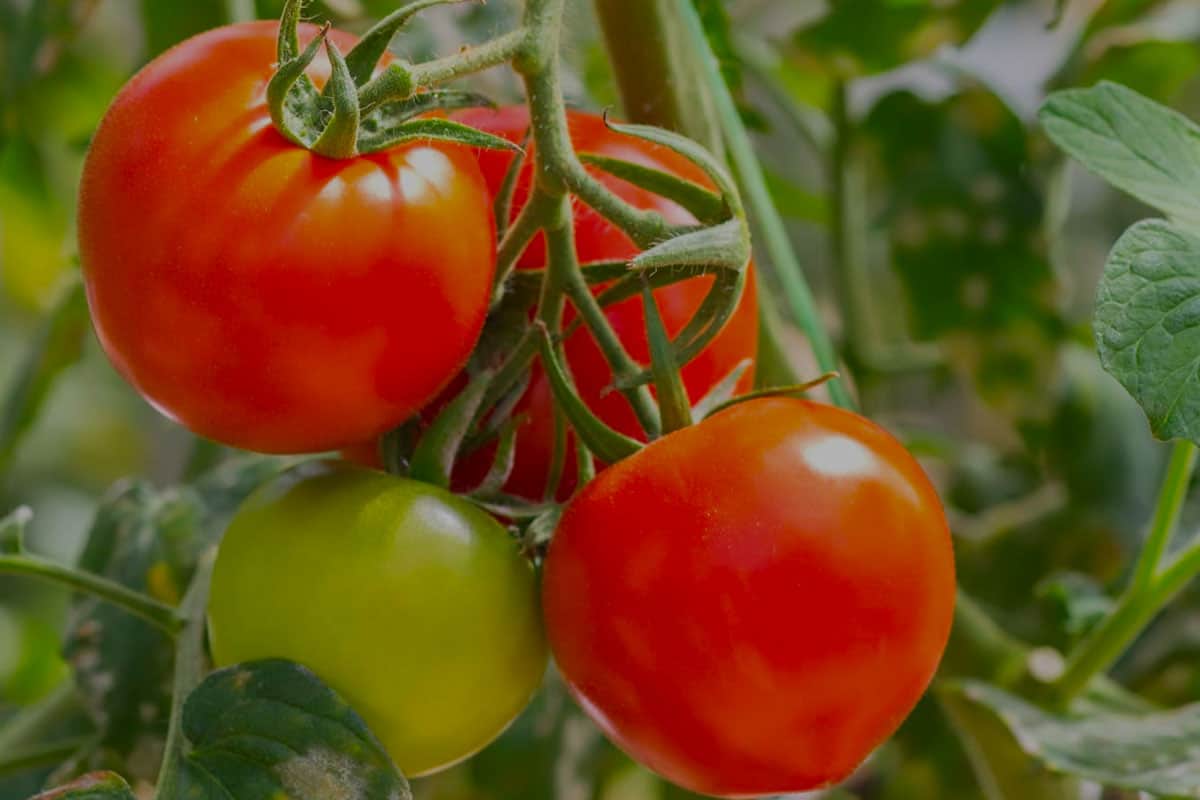Tomato is one of the most common plants that people start with when they have a garden. So how long does it take for tomatoes to grow, and why do people like to grow them? There are many factors that contribute to the growth of tomatoes as well as their conditions. These healthy veggies taste great in a wide variety of food, so having a tomato garden is a nice start. Today we are going to discuss some interesting things about tomatoes that you might want to know about. I am going to brief you with some details along with some tomato gardening tips, so check them out.
Contents
How long does it take for tomatoes to grow?
The answer is “It depends.”, it depends on which seed type that you choose. There are different types of tomato seeds, and each of them takes a different time to grow and mature. Generally, tomato seeds take between 55 days to 60 days to flower, grow, and mature. To achieve healthy growth, you have to make sure that the conditions are right for your tomatoes. We are talking about sufficient fertilization, sunlight, and water along with proper care without the presence of pests. Before we go to the details, I want to focus on the type of tomato seeds that you will see first.
Types Of Tomato Seeds

When you want to buy tomato seeds, you will come across some types that you might not know about. It is okay for first-timers to wonder what those different seed types are and what to do with them. I am going to introduce you to those tomato seed types below, let’s see which one is right for your garden.
1. Heirloom
In agriculture, “heirloom” refers to food that is old-fashioned with generations of passing down. Heirloom tomatoes are varieties that have been grown without crossbreeding for 40 years or longer. People often refer to heirloom tomatoes as organic tomatoes, but this is not always the case. If you use chemicals and pesticides, then it is a different story. But if you grow it at home with proper care without using any chemical substances, then they are organic. The special thing about heirloom tomatoes is their juicy flavor along with a variety of colors, sizes, and shapes. Some of the popular heirloom tomatoes are big rainbow, Brandywine, Cherokee purple, and pineapple.
2. Hybrid
This is everything opposite from heirloom tomatoes, the type of tomatoes with particular characteristics to suit different gardeners’ needs. Hybrid tomatoes focus more on resistance to diseases and pests while having firm flesh and thick skin. This type of tomato seed is more ideal for a larger garden since the yield can be harvested by machines. At the same time, hybrid tomatoes are better as whole fruit instead of sauce due to their characteristics.
3. Open-Pollinated
This type of seed requires pollination by the gardeners, insects, or the wind, and it is common for indoor growing. It can cause a greater amount of variations within plant populations, allowing them to slowly adapt to local growing conditions. Simply put, the seeds will remain true-to-type year after year as long as pollen is not shared between different varieties.
How To Grow Tomatoes Fast & Well?

I remember waiting anxiously for my tomatoes to finally ripe so that I could harvest them. As time goes by, I learn that you can speed up the growing process of your tomatoes while keeping them healthy. There are some tips that I learned, and I would like to share those with you today. At least you get to wait a few days less, so let’s take a look.
Tip 1: Soil Preparation
Tomatoes grow best in warm soil, so you have to make sure that the soil absorbs enough sunlight to be warm. You can do so by pulling or raking back the mulch to expose the soil to the sun. To make things even more effective, you might want to lay down clear plastic or dark-colored traps for heat concentration. And if you plant your tomatoes in containers or raised beds, things are even better because they warm up faster.
Tip 2: Mulch
Mulch can wait, so you don’t want to rush to apply them on the soil. You should apply mulch after a month in order to allow the sun to warm the soil. When summer is almost over, then you can apply a layer of up to 2 inches of straw. This is to help conserve the soil moisture so that the tomatoes can flourish and grow healthily.
Tip 3: Plant Deep
A friend of mine told me that tomato plants do well when you bury them deep, so I gave it a try. It worked, and the depth should be around three-quarters in each planting hole for each plant. Make sure to remove the branches along the stem so that the buried stem can sprout new roots. That simply means they can anchor the plants in the ground to keep the whole plant-strong.
Tip 4: Harden The Seeds
You might it time-consuming, but it actually helps your tomatoes to grow strong and fast. The best way to harden the plants is by taking them out for a few minutes each day. This is a nice way to introduce them to outdoor conditions and environments before planting them out. Sometimes tomatoes cannot ensure the chilly weather outside which can lead to dormancy and slow growth. Speaking of wind, it brings us to the third tip that you should also have in mind.
Tip 5: Shield The Wind
Cool temperature slows down the growth of tomatoes and most plants in general. On windy days, you should protect your young tomato plants from chill and wind by using some sort of barrier. Or even better, choose a spot with proper sunlight without too much exposure to strong winds. The wind does not only dry out the plants but also breaks fragile stems. You don’t want that to happen, and this is why you have to prevent it in advance.
Tip 6: Make Room
These tropical fruits need sufficient airflow and sunlight to grow, and this is why you need to give them enough room. Make sure to plant your tomato at a good distance from each other so that they can grow healthily. When you plant tomatoes too close to each other, chances are they get too damp. This can lead to diseases and fungus, and that can risk both their growth and health.
Tip 7: Support
And finally, all you need to do is providing your tomatoes with plenty of support that they need. We are talking about pruning, sunlight, water, and pests removal if there are any. With the right conditions, your tomatoes will grow beautifully and fast so that you can harvest them in no time.
How To Grow Tomatoes Indoor?

Naturally, tomatoes grow well in a warm climate with enough sunlight which means they do great outdoor. But if you want to grow your tomatoes indoors or during cold months, then I have some tips. One thing that I want you to know is that indoor plants take longer to ripen, so please be patient. Another thing to know is that the type of tomatoes that you grow also affects the growing time. Below are some tips on how to grow tomatoes indoors that you can follow.
Things You Need To Grow Tomatoes Indoor
- Starting trays (egg cartons, plastic containers, seed trays,…)
- Large container or pot
- Sterile soilless planting mix
- Fertilizer
- Plant stakes
- Optional: heat mat & LED grow light
How To Grow It Indoor?
Before anything, pick a spot with consistent sunlight and warmth for your plant to grow. The temperature should be in the range of 65 degrees Fahrenheit (18 degrees Celsius) or more indoor. Make sure that your tomatoes receive at least 8 hours of light so that they can produce fruit. In case you want to grow indoor tomatoes in successive batches, start the seeds every two weeks. This is to achieve a season-long supply of producing plants that you can harvest. Now let’s begin with the growing process.
Step 1: Plant the seeds
Put a layer of soilless planting mix in a starting tray and dampen it. Then plant the seeds (one to three per hold) about ¼ inch deep, and place the tray on the heat mat. If you don’t have a heat mat, you can place your tray in a consistently warm place. PureWow mentioned that the top of the fridge will do, and lights are not necessary for this step.
Step 2: Wait
It is going to take around a month for your tomato seeds to germinate. When the time comes, you will begin to see the seeds starting to sprout. After this, it is time to move on to step 3.
Step 3: Transplant
After germination, it is time for you to separate and transplant seedings into a large container or pot. In this process, you can use the same soilless planting mix to surround the seedings. When you move the seedings, make sure to be careful to avoid harming their roots. Then move them into the sunlight, and you can set up the LED light above them. The additional LED light is to provide extra warmth and gray days during cold months.
Step 4: Watering
Watering tomatoes can be tricky, and this is how you should do it. Notice when the soil is dry because that is when you have to water them. It should be every few days and don’t wait until the soil is completely dry because it can affect the roots. At the same time, you should also fertilize your plants every two weeks after the transplant. Once small green tomatoes start showing, apply fertilizer every week to aid their growth.
Step 5: Use Plant Stakes
As the tomatoes grow, the vines will also start to appear which means it is time to use plant stakes. What you need to do is place plant stakes in the pots to hold up the vines. The stake should be short so that they can support the base of the plant well. You want to make sure that your tomatoes grow upwards so that they won’t bend or break as they get bigger.
Step 6: Harvest
For those who are anxious, this is the moment for you. Experts recommend harvesting the tomatoes before they are ripe because your tomatoes will look prettier and last longer. If you wait for them to ripen, there will be cracks which means they are not long-lasting to keep. Also, there could be insects that are attracted to the tomatoes when there are cracks and that is not good. The tomatoes that are ready for you to harvest should have half to ¾ of ripeness. This allows you to keep them for a few more days before they fully ripen. When you harvest, hold the tomato near the stem and twist it off the vine while it is still green.
Tomato Care & Maintenance Tips

While waiting for your tomatoes to ripen, you will have to take care of them along the way. There are a few things that you should follow in order to keep your tomatoes healthy and well.
- Rotate the plants so that they get consistent sunlight and grow evenly all the way around.
- Always keep an eye on bugs even if you grow your tomatoes indoors. Indoor and outdoor pests are not different, and the most common ones are aphids and whiteflies.
- You can check the dryness of the planting mix by inserting your finger up to its top knuckles. If it is dry, then you know that it needs water.
- When replanting seedlings, bury them up to the tiny hairs at the base. Those hairs will become the roots, and you want to make sure that they stay underground.
- After harvesting, you can store them in the fridge if they are already ripe or overripe. They will last for about two weeks, and let them go back to room temperature before eating them. Then you will get the same juicy flavor just like the new ones.
What Are The Best Tomatoes To Grow Indoor?
Whether or not it is your first time growing tomatoes indoors, you should always know which type to grow. When you choose the right tomatoes for indoor planting, the final results will be satisfying. The best tomatoes to grow indoor are cherry, Florida petite, plum, red robin, tiny Tim, and toyboy. As long as you give them plenty of light and enough room to grow, they will not let you down.
Conclusion
Tomatoes may take some time to flourish and grow, but the results will be amazing if you take good care of them. These veggies (or fruits) are among the first plant to start for those who are new to gardening. Once you can successfully grow tomatoes, other plants will start to appear in your garden. If things are going well with your garden now, keep up the good work. Let me know if you have any questions regarding how to plants tomatoes.

